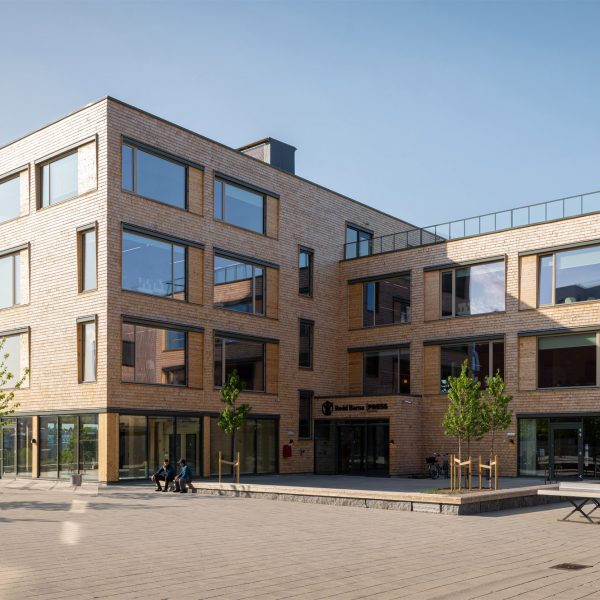
[ad_1]
Norwegian consulting firm Oslotre has completed Hasletre, a wooden office building designed to be easily dismantled and reused in the future.
Located near Oslo city center and currently housing the charity Save the Children, the five-storey building will feature a 3,000 square meter building “rooted in environmental awareness, adaptability and innovation”. There will be office space, the studio said.
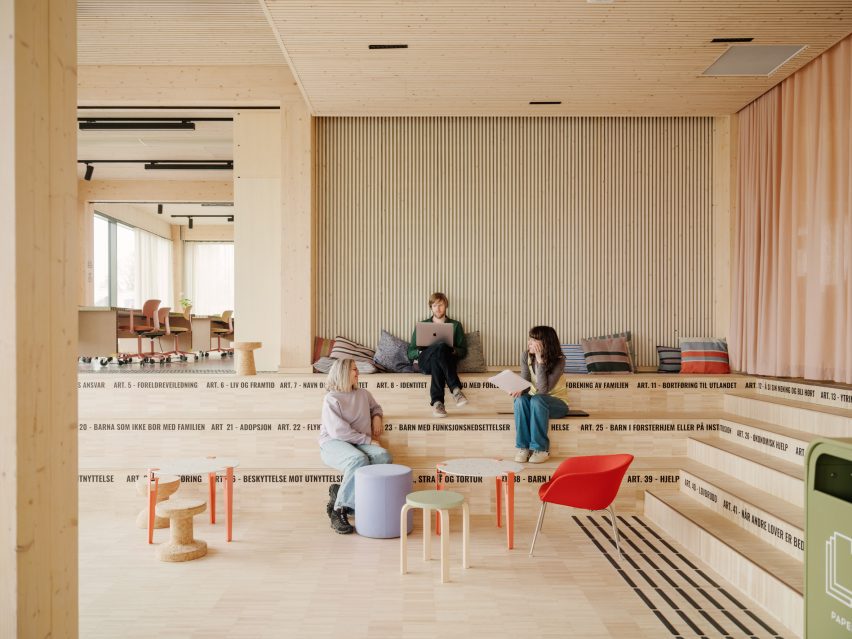

Oslotre designed the building to be a completely steel-free 5 x 5 meter timber grid structure in order to reduce the building’s carbon content and make all components easily reusable.
This “wood-centric” approach used large wood dowels to connect structural elements, wood nails instead of screws for fixing, and wood insulation in the walls.
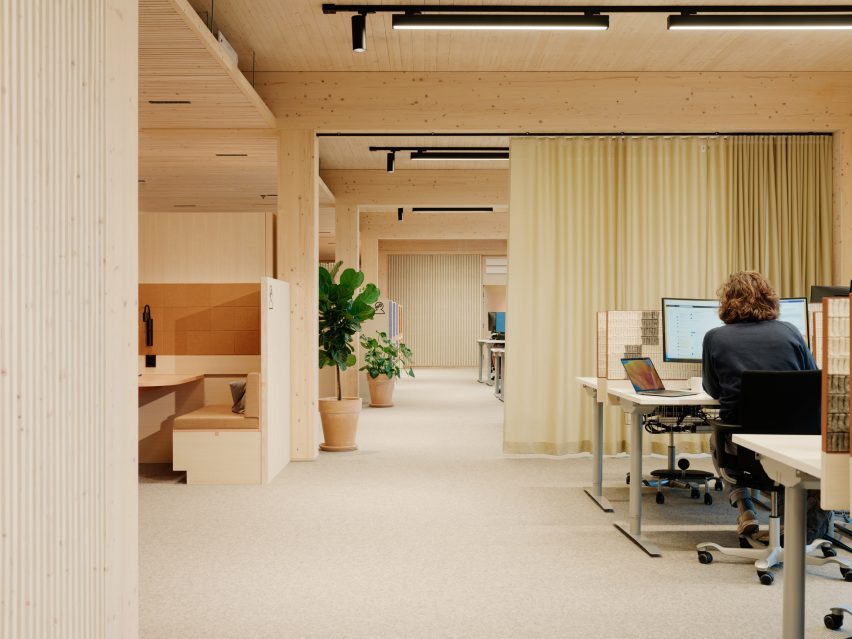

“Essentially, we see this building as a storehouse of materials for future construction when Hasletre reaches the end of its useful life,” lead architect Moritz Globa told Dezeen.
“The wood elements were brought as close to maximum production size as possible, with minimal perforation to increase reusability. [and] We documented all assembly drawings to serve as disassembly manuals,” he continued.
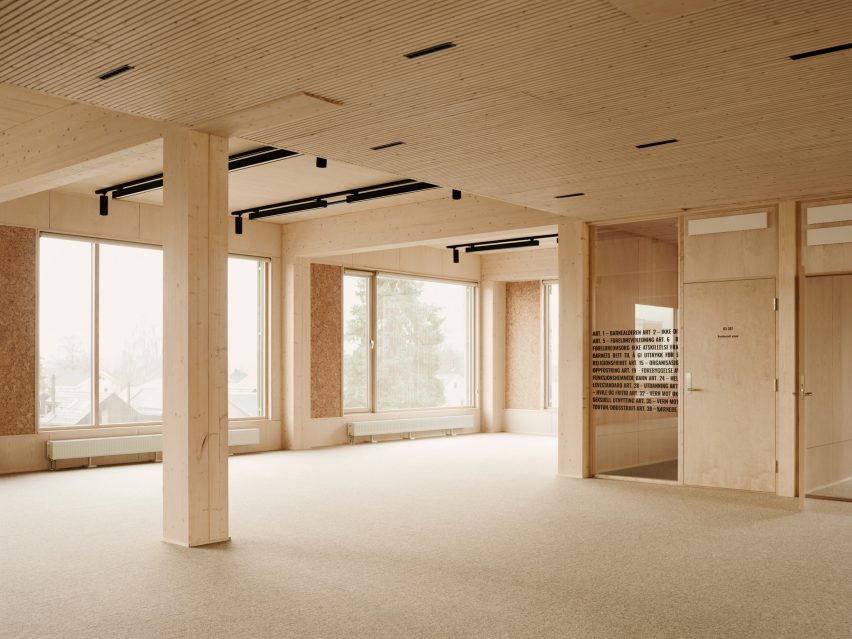

Inside HasleTre, office spaces are organized according to the dimensions of a timber frame, with various timber and curtain dividers creating meeting rooms and enclosing common spaces with rows of large desks and tiered chairs. Masu.
Full-height windows provide views from the ground floor to the surrounding plantings and patios, while large windows illuminate the offices on the upper floors.
Both the structure and interior wood paneling remain exposed, contrasting with the black metal light fixtures and pops of bright color in the furniture.
“Internally, we aim to expose as much of the wooden structure as possible, in combination with wooden sheets for lightweight walls,” Globa said.
“Research shows the health benefits of living and working in buildings with exposed wood,” he added.
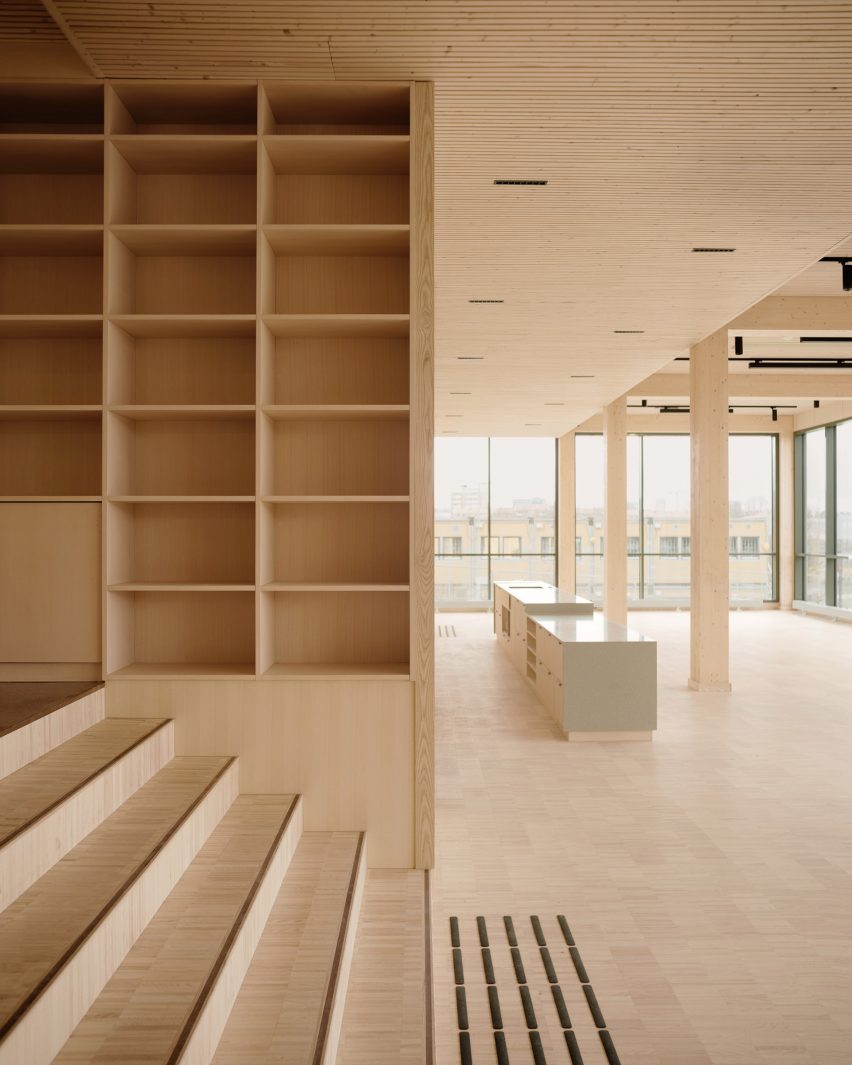

The building’s exterior uses heartwood pine shingles that weather over time to develop shades of gray and brown, chosen to reference the palette of the adjacent brick building.
Internal acoustic ceiling panels and flooring are made from reused and recycled materials, 60% of the furniture is upcycled, and the rest is made from biodegradable materials or waste.
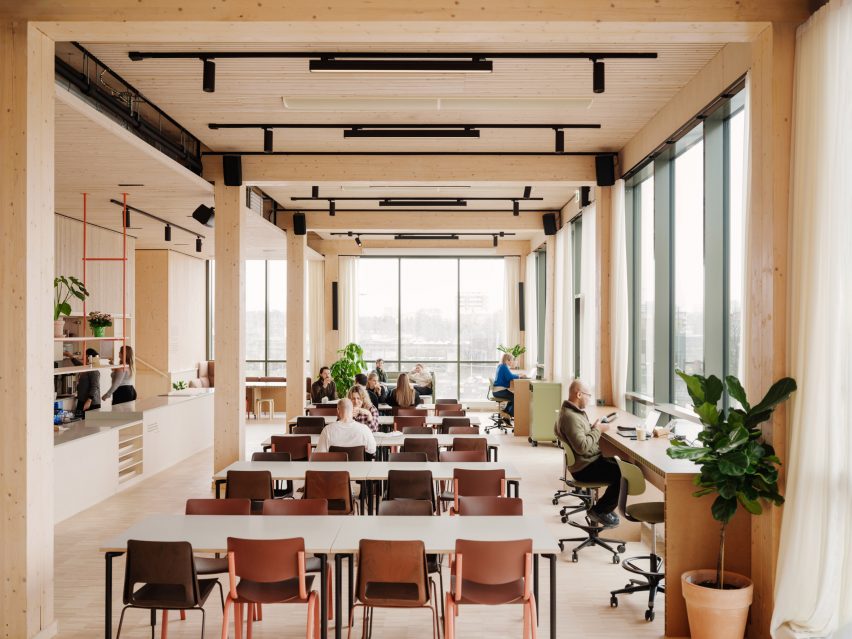

Bicycle parking is provided next to the building, and changing rooms and showers are provided in the basement for employees to encourage the use of bicycles instead of cars.
Large-scale wooden buildings are becoming increasingly popular in Norway, and Norway is home to one of the first true wooden skyscrapers, Mjøstårnet by Voll Arkitekter. This 18-story wooden tower houses apartments, a hotel, office space, and a restaurant.
Cinematography by Einar Aslaksen and Dmitry Tkachenko.
[ad_2]
Source link






